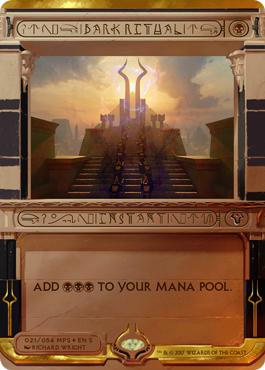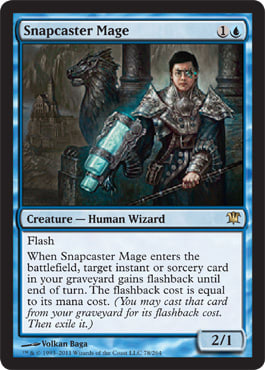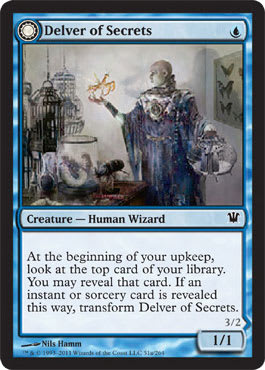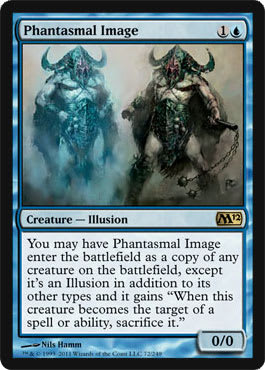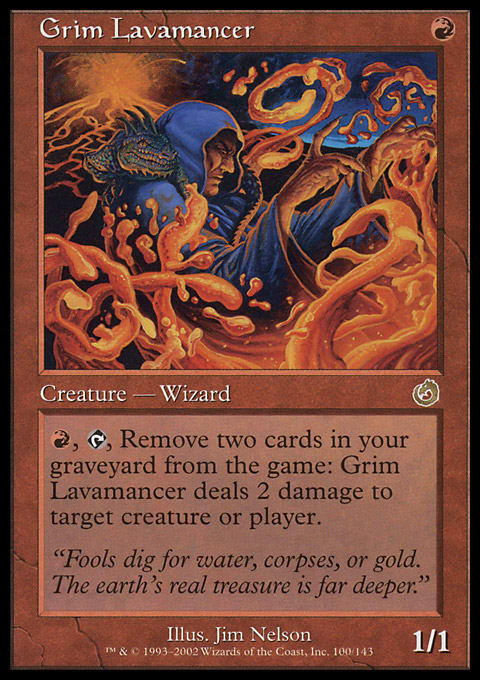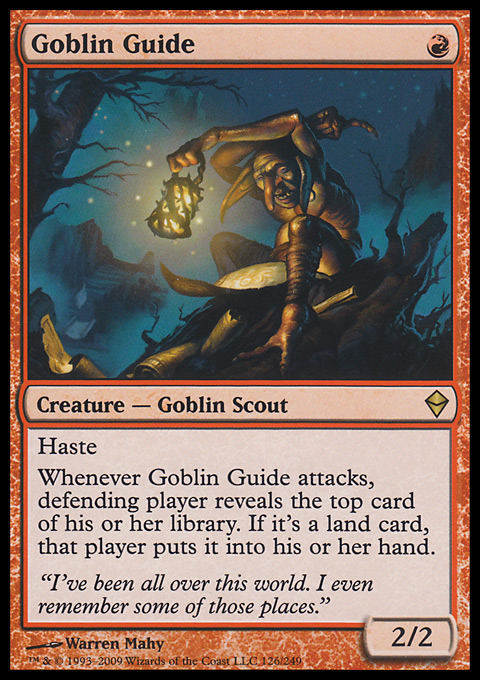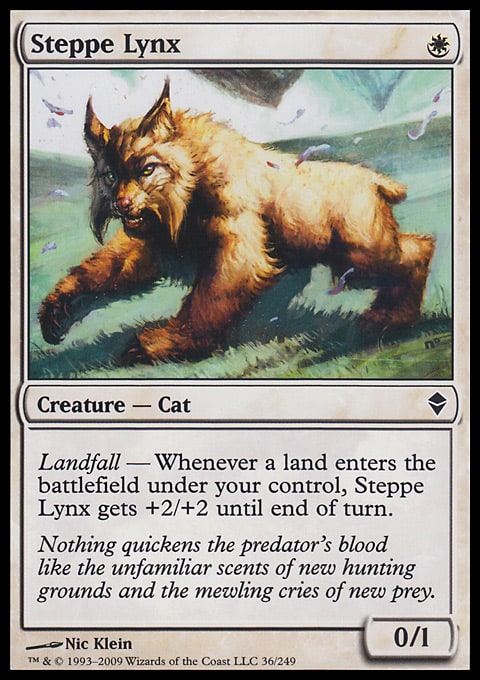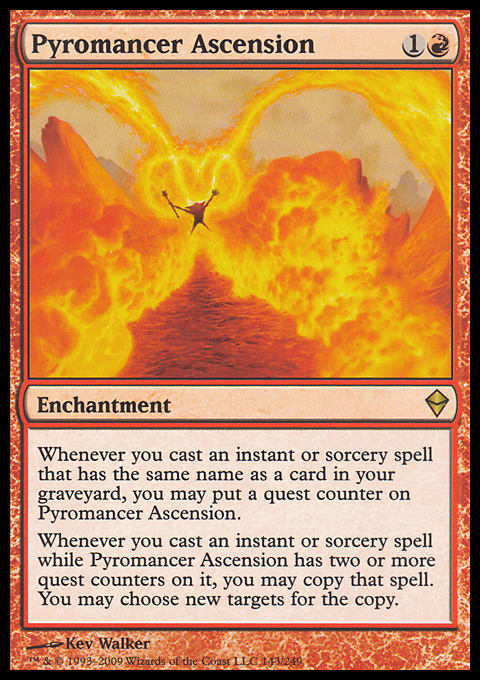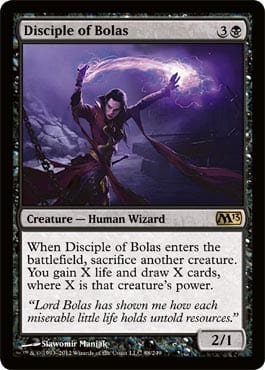When you describe Magic to a layman, the explanation usually involves wizards using monsters or champions of some sort to battle it out. Creatures are a central part of Magic’s identity: Creatures, land, and spells—that’s what it’s about. And despite that they’re constants of Magic, creatures’ role in and impact on the game are steadily evolving.
When I first started playing, two of the most powerful creatures in the game were 4-drops from Arabian Nights: Erhnam Djinn and Juzam Djinn—a green 4/5 with a drawback and a black 5/5 with a drawback. Now there are creatures such as Phyrexian Obliterator, Thrun, the Last Troll, Yeva, Nature's Herald, Vampire Nocturnus, Skinrender, and Ezuri's Brigade at 4 mana in those colors. Imagine what Ezuri's Brigade would have been like when people were playing with Moxes, Sol Ring, Zuran Orb, and Mana Crypts. While today’s creatures may not all be strictly better, I don’t think we’d be seeing either Djinn being used in Standard.
Creatures are the one major card type with which we’ve seen much power creep from Wizards of the Coast. Artifacts have been brought to heel: There are no more Moxes, Black Lotus, Black Vise, Cursed Scroll, Skullclamp, and so on. Lands have been powered down: There are no more Library of Alexandria, Mishra's Factory, Strip Mine, Volcanic Island, Ancient Tomb, City of Brass, Bazaar of Baghdad, and so on. Enchantments are less powerful: Gone are Land Tax, Fastbond, Control Magic, Necropotence, Wild Growth, and so on. Even instants and sorceries are more restrained: Dark Ritual, Counterspell, Berserk, Demonic Tutor, Channel, Regrowth, Wheel of Fortune, Time Walk, Ancestral Recall, and Armageddon are the types of cards we don’t really see anymore and probably never will. This is because, for the most part, the members of WotC’s R&D team learn from their mistakes and generally know what they’re doing these days.
While other card types have been gradually depowered, creatures have generally either maintained their relative power levels, or in many cases, become even better. In the case of Juzam Djinn and Hypnotic Specter, one of the biggest factors in why they were so powerful when they were seeing so much play was that they could hit the table on turn one, thanks to Moxes, Black Lotus, and Dark Ritual. On turns three and four, they don’t represent nearly as big of threats. So part of what needed to happen was for WotC to identify the real problem—in this case, overpowered mana acceleration.
WotC’s awareness of what types of cards are the problems and what types of decks are a problem wasn’t always as good as it is today. For example, when they introduced Extended, they also introduced a banned list, which included several somewhat vanilla creatures including Hypnotic Specter, Kird Ape, and Juggernaut. Hall of Famer Rob Dougherty found this laughable—all three of these were creatures that could be killed for 1 mana with cards that were in almost every deck at the time: Lightning Bolt and Swords to Plowshares. Obviously, if WotC had decided that cheap creature removal was too powerful and removed it all from the environment, the power of cheap creatures might need to be closely monitored, but that just wasn’t the case.
This whole situation was so amusing to Rob that when WotC came to their senses and unbanned these creatures in Extended, Rob felt the need to take action. He immediately built a deck he named “All Juggernauts, All the Time.” He was going to show those lunatics at WotC their folly in allowing a 5/3 for 4 mana into Extended. It looked something like this:
"All Juggernauts, All the Time"
- The Star (4)
- 4 Juggernaut
- Make More Juggernauts (12)
- 4 Clone
- 4 Vesuvan Doppelganger
- 4 Copy Artifact
- Steal Those Juggernauts! (8)
- 4 Control Magic
- 4 Steal Artifact
- Cast Juggernauts Faster (8)
- 4 Mind Stone
- 4 Ancient Tomb
- Lands (22)
- 22 Island
So yeah, Rob didn’t exactly win any tournaments with this deck, but Juggernaut obviously should never have been banned in the first place. Fortunately, not only did Wizards come to their senses, but they’ve been steadily becoming better at understanding how to power-balance the game ever since. Obviously, there are some hiccups along the way still, but for the most part, the game appears to be in capable hands.
One of the best ways to track the power creep of creatures in Magic is to see if recently printed creatures are being used in older formats in which you can use much older sets—Vintage, Legacy, Extended, and Modern. For the most part, midrange creatures see almost no play in formats that allow large numbers of sets with more powerful noncreature cards than we see currently. The creatures being played in Modern, Legacy, and so on are mostly 1- and 2-drops. These include many creatures that are either currently in print or were very recently:
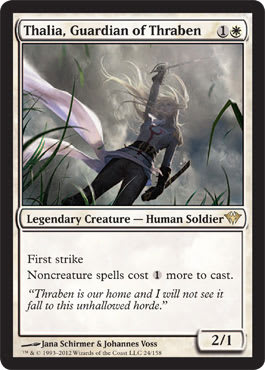 |
||
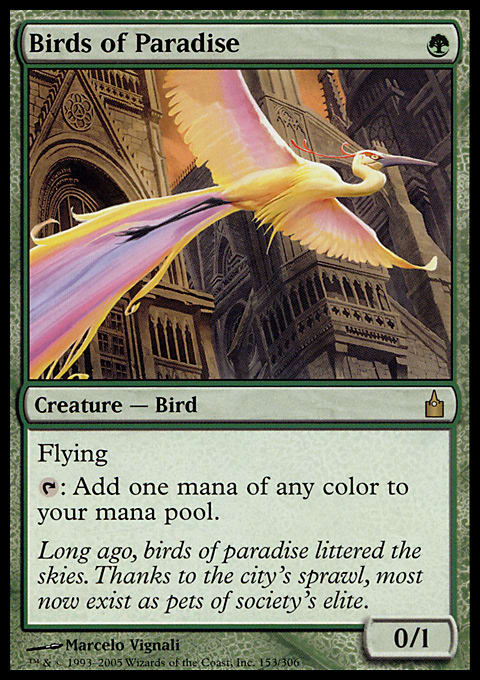 |
The other types of creatures we see in Legacy are ones for which casting cost doesn’t matter because of reanimation because of Show and Tell, Sneak Attack, and cards like those. These are also primarily creatures that were printed recently, such as Griselbrand and Emrakul, the Aeons Torn. While we do see some recently printed noncreature cards appearing in decks in these formats, they’re rarely powerful, centerpiece cards as these creatures are. Decks are typically built around older cards such as Goblin Charbelcher, Sneak Attack, Show and Tell, Force of Will, Hymn to Tourach, Lion's Eye Diamond, dual lands, and so on. These are the kinds of cards we shouldn’t expect to see printed anymore.
This continued printing of really powerful creatures while other card types are being weakened—or “nerfed,” as game designers call it—means that the R&D team at WotC has figured out some very important principles.
- Most Magic players don’t want the game ending before turn three, especially if they draw any cheap creatures and/or cheap creature removal.
- Most Magic players envision and prefer the game to be a battle that involves creatures in some way. They certainly want for creatures to be a mainstay and for noncreature-based decks to be relative aberrations.
- More new players will be drawn into the game by seeing people battling it out with creatures than just by seeing players constantly shuffling, tracking storm counts, and generally taking super-long turns going off while the other player sits around looking bored and miserable.
- Losing to creatures, even pretty quickly, feels much more fair than losing to a relatively noninteractive series of spells while you sit and watch with some anti-creature cards in your hand.
Obviously, not everyone feels this way, but Magic is a business, and the designers need to keep that in mind when deciding what direction to take the game and what guiding principles to use with card design. Magic 2013 introduces some powerful new creatures to the mix such as Thragtusk, Master of the Pearl Trident, Crusader of Odric, Yeva, Nature's Herald, and Thundermaw Hellkite. I played with four Shivan Dragons in the first Pro Tour, and I thought they were pretty powerful . . . Thundermaw Hellkite is way better, and I’m not even sure it will see much play in Standard.
Another exciting new creature from Magic 2013 is Disciple of Bolas. One reader pointed out to me last week that he thought I was remiss for not including Disciple of Bolas in any of my initial Standard decks using Magic 2013. I’m inclined to agree. In addition, I suspect my mono-black deck was probably my weakest build in that article, so I’ve decided to kill two birds with one stone:
"MBZ (Mono-Black Zombies)"
- Creatures (24)
- 4 Blood Artist
- 4 Diregraf Ghoul
- 4 Disciple of Bolas
- 4 Geralf's Messenger
- 4 Gravecrawler
- 4 Phyrexian Rager
- Spells (12)
- 4 Tragic Slip
- 4 Sign in Blood
- 4 Mortarpod
- Lands (24)
- 24 Swamp
This deck has pretty much all the elements I love in a deck:
- Great mana. It’s mono-colored and has all basics and enough card-draw that one should avoid too much stall or flood. Plus, the mana curve ensures you plenty to do early, and the card-draw and mana sinks such as Gravecrawler and Mortarpod should give you enough to do late.
- Fast and aggressive. With eight 2-power 1-drops, Blood Artists, and Geralf's Messengers, the deck isn’t very forgiving to opponents with a less-than-optimal draw in the early game.
- Synergy. Gravecrawler likes that I’m playing twelve Zombies and card-draw to find them. The deck’s aggression makes the damage/life loss from Blood Artist, Mortarpod, Geralf's Messenger, and even Sign in Blood very dangerous. Mortarpod and Disciple of Bolas give me sacrifice outlets that go great with Gravecrawler, Blood Artist, Tragic Slip, and Messenger.
- Card-draw and card advantage. With Sign in Blood, Rager, and Disciple, the deck has quite a bit of draw power for a black deck. In addition, the fact that Gravecrawler and Messenger can come back from the dead is also card advantage.
I’m sure Disciple of Bolas will also find a home in other decks—especially ones with green. Imagine sacrificing a Thragtusk to your Disciple . . . hot! Either way, I’m sure going forward that Standard will for the most part be dominated by decks using creatures, and that’s for the best. Perhaps WotC will mix things up from time to time by releasing the makings for a Tier 1 deck—or close to Tier 1—that doesn’t depend on creatures, but that will and should be the rare exception. So get out there and unleash some monsters!















